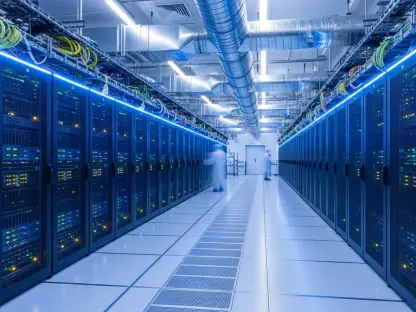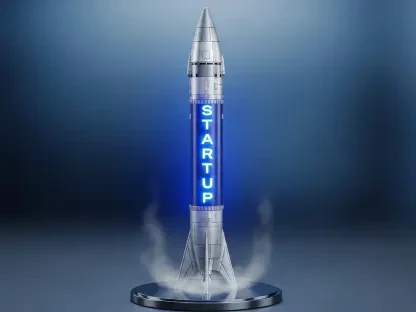As enterprise automation continues to evolve, few have a deeper understanding of its transformative potential than Vijay Raina, a renowned specialist in SaaS technology and software architecture. With a career dedicated to pioneering solutions in enterprise tools, Vijay has become a thought leader in designing systems that drive efficiency and innovation. In this exclusive interview, we explore the cutting-edge realm of agentic workflows, the role of orchestration platforms in modern automation, and how businesses can balance speed, trust, and compliance in high-stakes environments. Join us as Vijay shares his insights on reshaping enterprise transformation through adaptive, goal-driven technologies.
How would you describe agentic workflows, and what sets them apart from traditional automation approaches?
Agentic workflows represent a significant leap forward from traditional rule-based automation. While older systems relied on rigid, predefined instructions, agentic workflows are designed to be adaptive and goal-oriented. They can respond to real-world complexities by making decisions based on context, not just strict rules. This adaptability allows them to handle dynamic challenges—like unexpected data variations or evolving business needs—making them far more effective in today’s fast-paced environments.
What’s driving the growing importance of agentic workflows in enterprise transformation today?
The push for agentic workflows comes from the need to solve complex, interconnected business challenges. Companies are dealing with massive data volumes, diverse systems, and the demand for real-time decision-making. These workflows enable automation that doesn’t just execute tasks but aligns with broader strategic goals, improving efficiency and scalability. Industries like healthcare and finance, where precision and adaptability are critical, are seeing especially strong benefits from this shift.
Can you walk us through the evolution of automation technologies, particularly how companies have moved toward integrating agentic workflows?
The journey started with robotic process automation, or RPA, which focused on repetitive, rule-based tasks. Over time, companies recognized the limitations of this approach in handling nuanced or unpredictable scenarios. By integrating AI, machine learning, and capabilities like document understanding and computer vision, they’ve built systems that support agentic workflows. This evolution means businesses can now tackle both deterministic tasks and adaptive, goal-driven processes within a unified framework.
How do orchestration platforms serve as a backbone for modern enterprise automation?
Orchestration platforms act as a central control hub, bringing together robots, intelligent agents, and human oversight into a seamless system. They allow businesses to assign the right tool—whether a robot for structured tasks or an agent for complex decisions—to the right job. Beyond execution, these platforms help map out end-to-end processes, ensuring everything works in harmony while adapting to unique operational needs without requiring a complete overhaul of existing tech.
In what ways do these platforms provide visibility and opportunities for process improvement over time?
One of the standout features of orchestration platforms is their ability to visualize workflows. Businesses can see exactly how processes unfold, identify bottlenecks, and spot inefficiencies. This insight isn’t just a snapshot—it’s ongoing, enabling iterative improvements. By modeling and analyzing workflows, companies can optimize operations continuously, ensuring they stay agile while maintaining reliability, which is crucial in regulated sectors.
Why do you believe human oversight remains essential in automation, especially in industries with strict regulations?
Even with advanced automation, human oversight—or the ‘human-in-the-loop’ approach—is critical, particularly in fields like healthcare and finance where decisions can have significant consequences. Humans bring judgment and ethical considerations that algorithms can’t replicate. For instance, in a medical billing process, a human might need to review anomalies that an agent flags to ensure compliance with regulations. I think this balance will remain vital for the foreseeable future.
How can businesses ensure trust and compliance when deploying agentic workflows in high-stakes environments?
Trust and compliance come down to robust safeguards and transparency. Companies must embed checks and balances—like audit trails and error detection mechanisms—into their systems to minimize risks. It’s also about striking a balance between speed and reliability. By prioritizing rigorous testing and maintaining human oversight for critical decisions, businesses can deploy automation confidently, knowing they’re meeting regulatory standards while still driving efficiency.
What do you see as the key benefits of blending deterministic automation with agent-driven intelligence in a single ecosystem?
Combining deterministic automation with agent-driven intelligence creates a powerful synergy. Deterministic systems handle repetitive, predictable tasks with precision, while agentic intelligence tackles complex, non-linear challenges with adaptability. Together, they offer a comprehensive solution—streamlining operations end-to-end while ensuring flexibility. This hybrid approach maximizes efficiency, reduces errors, and allows businesses to scale automation across diverse processes without sacrificing control.
What’s your forecast for the future of agentic workflows in enterprise automation?
I believe agentic workflows will become the cornerstone of enterprise automation over the next decade. As AI and machine learning continue to advance, these workflows will grow even more sophisticated, handling increasingly complex tasks with minimal human input. However, the focus will also shift toward trust and governance—ensuring these systems remain transparent and accountable. We’re heading toward a future where automation doesn’t just support businesses but actively drives strategic innovation, reshaping entire industries in the process.









